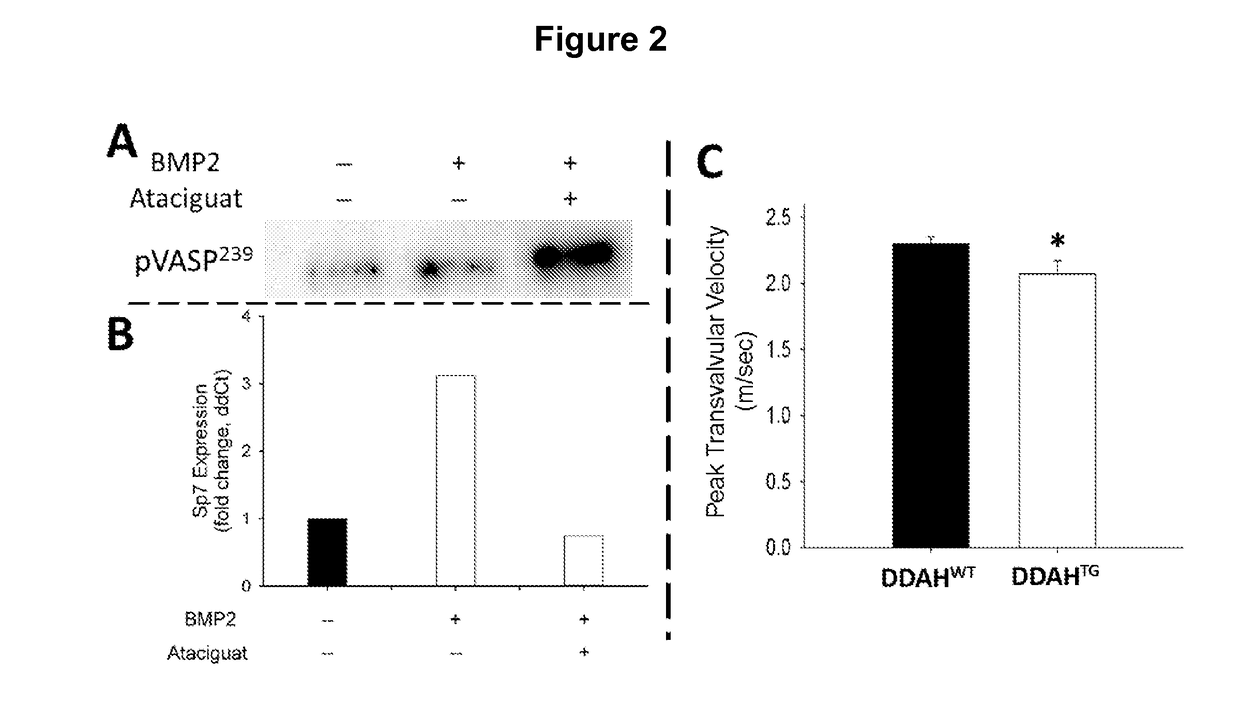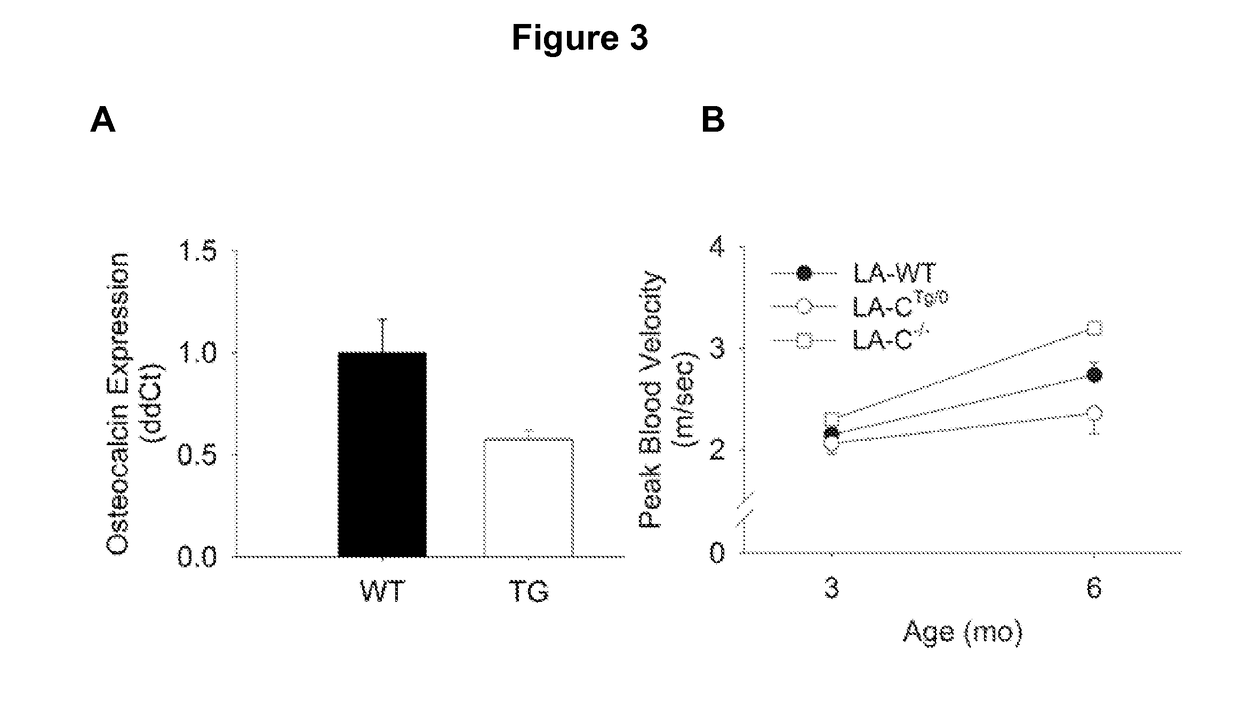Methods and materials for treating calcific aortic valve stenosis
a calcific aortic valve and stenosis technology, applied in the field of cardiovascular conditions, can solve the problems of sudden death, syncope, shortness of breath on exertion, and calcification of heart valves and/or vessels, and achieve the effects of reducing the calcification of heart valves and/or vessels, and slowing the progression of aortic sclerosis
- Summary
- Abstract
- Description
- Claims
- Application Information
AI Technical Summary
Benefits of technology
Problems solved by technology
Method used
Image
Examples
example 2
uanylate Cyclase Activators Increase NO Signaling which can Slow Progression of Calcific Aortic Valve Stenosis
[0035]To determine whether induction of sGC signaling reduced osteogenic signaling in vitro, aortic valve interstitial cells were treated with BMP2 in the presence or absence of Ataciguat (HMR1766, 5-Chloro-2-[[(5-chloro-2-thienyl)sulfonyl]amino]-N-[4-(4-morpholinylsulfonyl)phenyl]benzamide) for 24 hours. Ataciguat activated sGC signaling (indicated by pVASP239 levels) and profoundly suppressed osteogenic signaling in aortic valve interstitial cells in vitro (FIGS. 2A and 2B).
[0036]To determine whether increasing NO production and sGC signaling can slow progression of calcific aortic valve stenosis in vivo, the effects of overexpressing human DDAH1 (DDAH1TG, an enzyme that degrades endogenous inhibitors of NOS) on aortic valve function in ldlr-deficient, apoB100-only mice were examined Increasing NO production and sGC signaling in DDAHTG mice slowed progression of calcific a...
example 3
Oxidative Stress Slows Progression of Calcific Aortic Valve Stenosis
[0040]To determine whether hydrogen peroxide levels are associated with altered osteogenic gene expression and aortic valve dysfunction, ldlr-deficient, apoB100-only mice that either overexpress human catalase or are deficient in catalase were generated. Overexpression of catalase, which reduces oxidative stress, reduced soluble guanylate cyclase oxidation, increased NO signaling, reduced expression of pro-osteogenic genes, and slowed progression of calcific aortic valve stenosis (FIGS. 3A and 3B). Deletion of catalase, which increases oxidative stress, increased sGC oxidation, reduced NO signaling, and accelerated progression of calcific aortic valve stenosis in hypercholesterolemic mice (FIG. 3B).
[0041]These results indicate that increases in oxidative stress contribute to soluble guanylate cyclase oxidation, pro-osteogenic gene expression, and progression of calcific aortic valve stenosis in hypercholesterolemic ...
example 4
Pro-Osteogenic Signaling and Slowing Progression of Calcific Aortic Valve Stenosis
[0042]To confirm that administration of soluble guanylate cyclase activators (e.g., Ataciguat) reduces pro-osteogenic signaling and slows progression of calcific aortic valve stenosis in mammals, ldlr− / − / apoB100 / 100 mice are maintained on a Western diet for 6 months, and then are placed into one of four groups: 1) Vehicle, 2) 5 mg / kg Ataciguat / day, or 3) 10 mg / kg Ataciguat / day, or 4) 15 mg / kg Ataciguat / day for an additional 3 months. Vehicle or Ataciguat is administered daily by oral gavage. Changes in cardiac and aortic valve function are evaluated at 3, 6, and 9 months in all four groups of mice. 20 mice of each treatment group are sacrificed at the 9 month time point, which typically represents a stage of moderate to severe calcific aortic valve stenosis in otherwise untreated mice. One group of 10 mice is used for semi-quantitative histological / immunohistochemical evaluation of aortic valve (calciu...
PUM
| Property | Measurement | Unit |
|---|---|---|
| time | aaaaa | aaaaa |
| computed tomography scanning | aaaaa | aaaaa |
| solubility | aaaaa | aaaaa |
Abstract
Description
Claims
Application Information
 Login to View More
Login to View More - R&D
- Intellectual Property
- Life Sciences
- Materials
- Tech Scout
- Unparalleled Data Quality
- Higher Quality Content
- 60% Fewer Hallucinations
Browse by: Latest US Patents, China's latest patents, Technical Efficacy Thesaurus, Application Domain, Technology Topic, Popular Technical Reports.
© 2025 PatSnap. All rights reserved.Legal|Privacy policy|Modern Slavery Act Transparency Statement|Sitemap|About US| Contact US: help@patsnap.com



